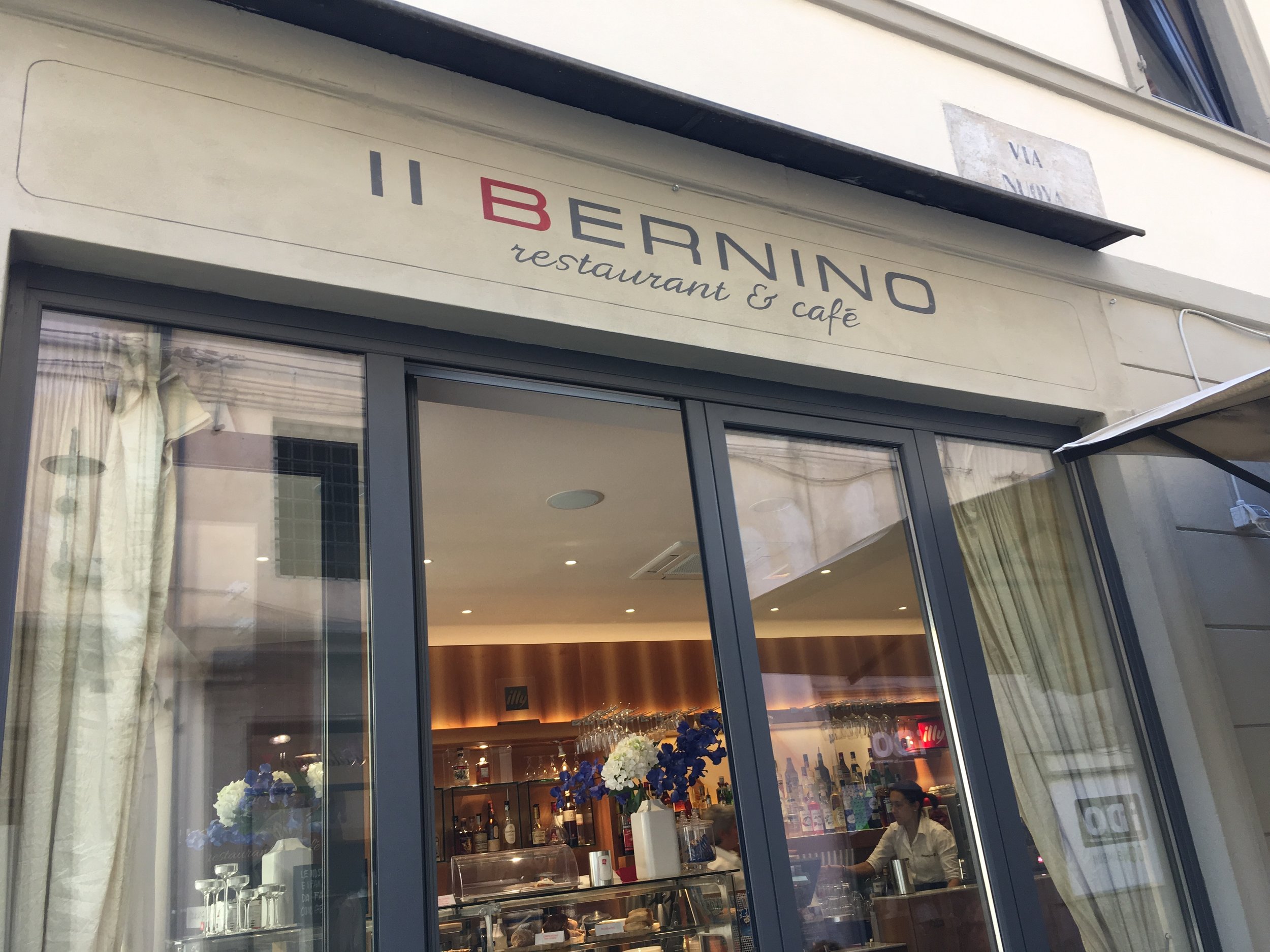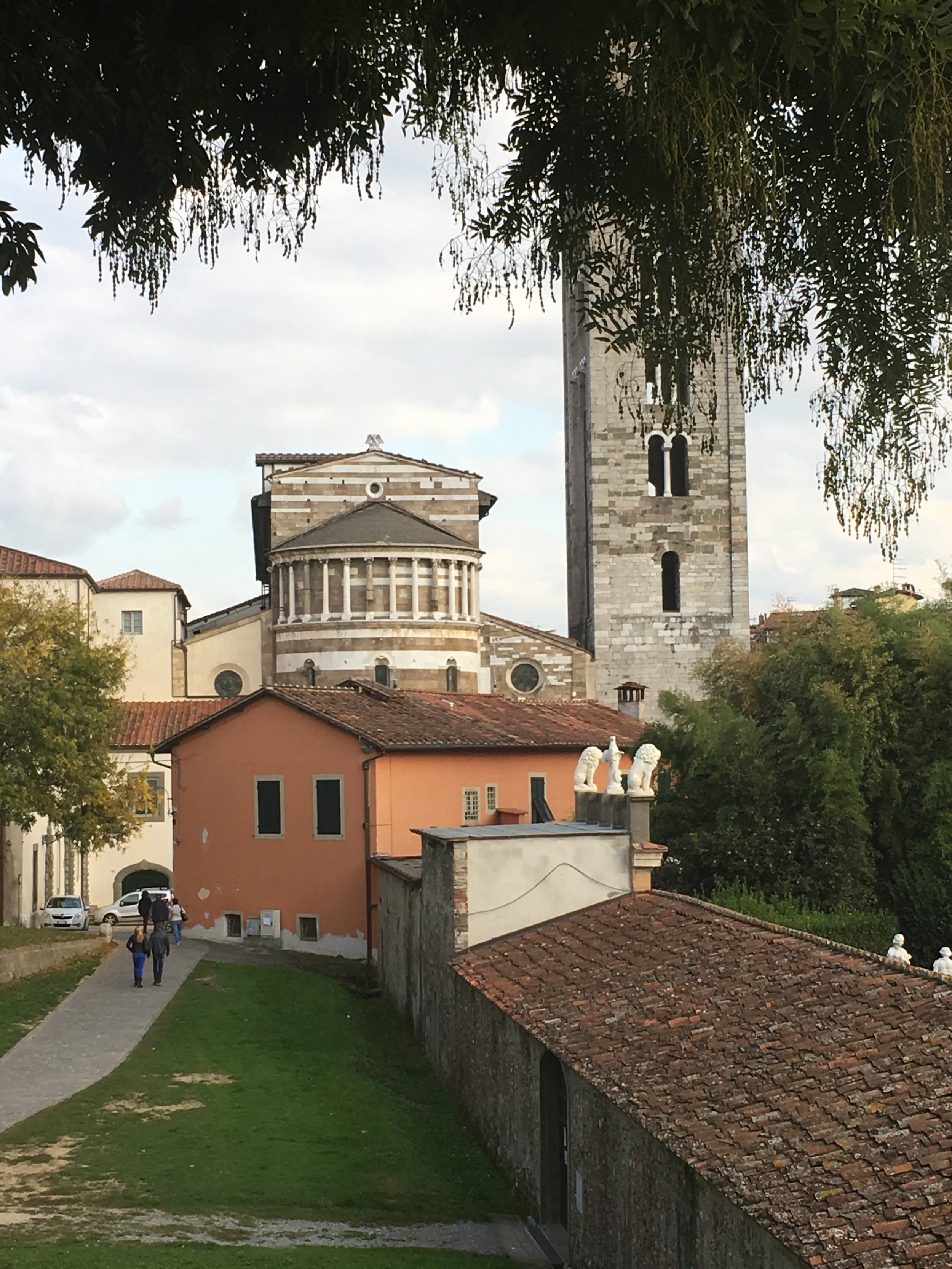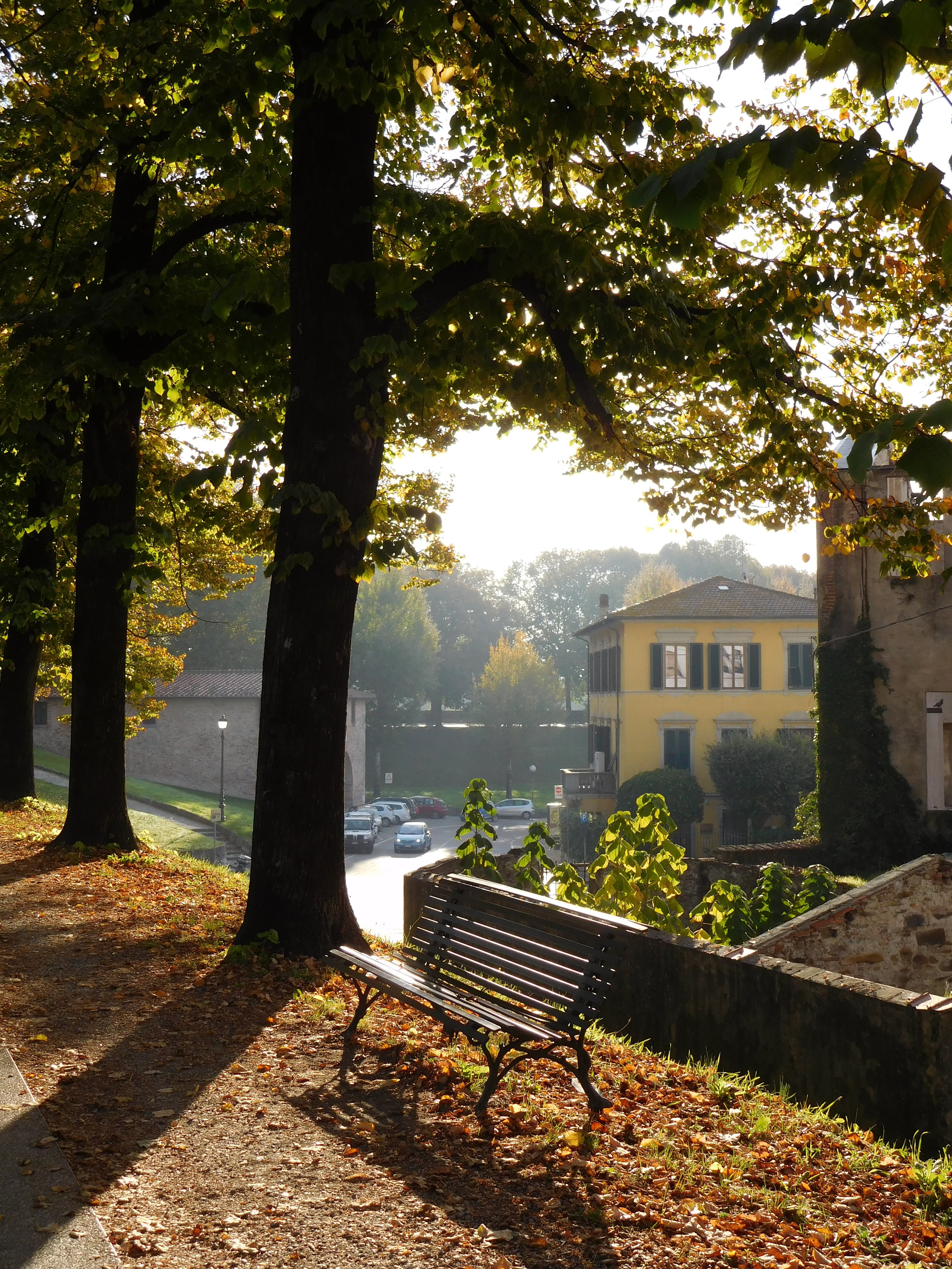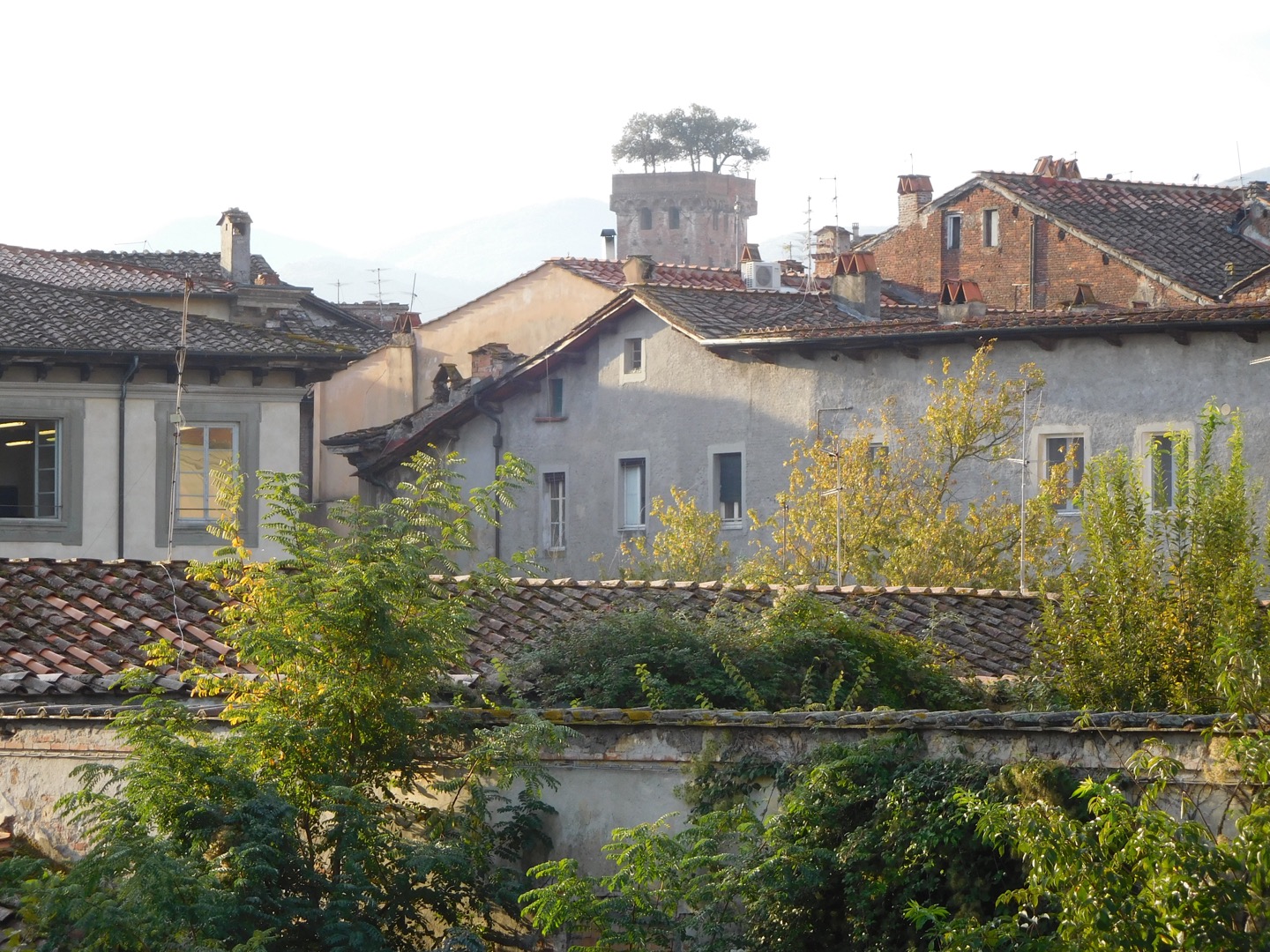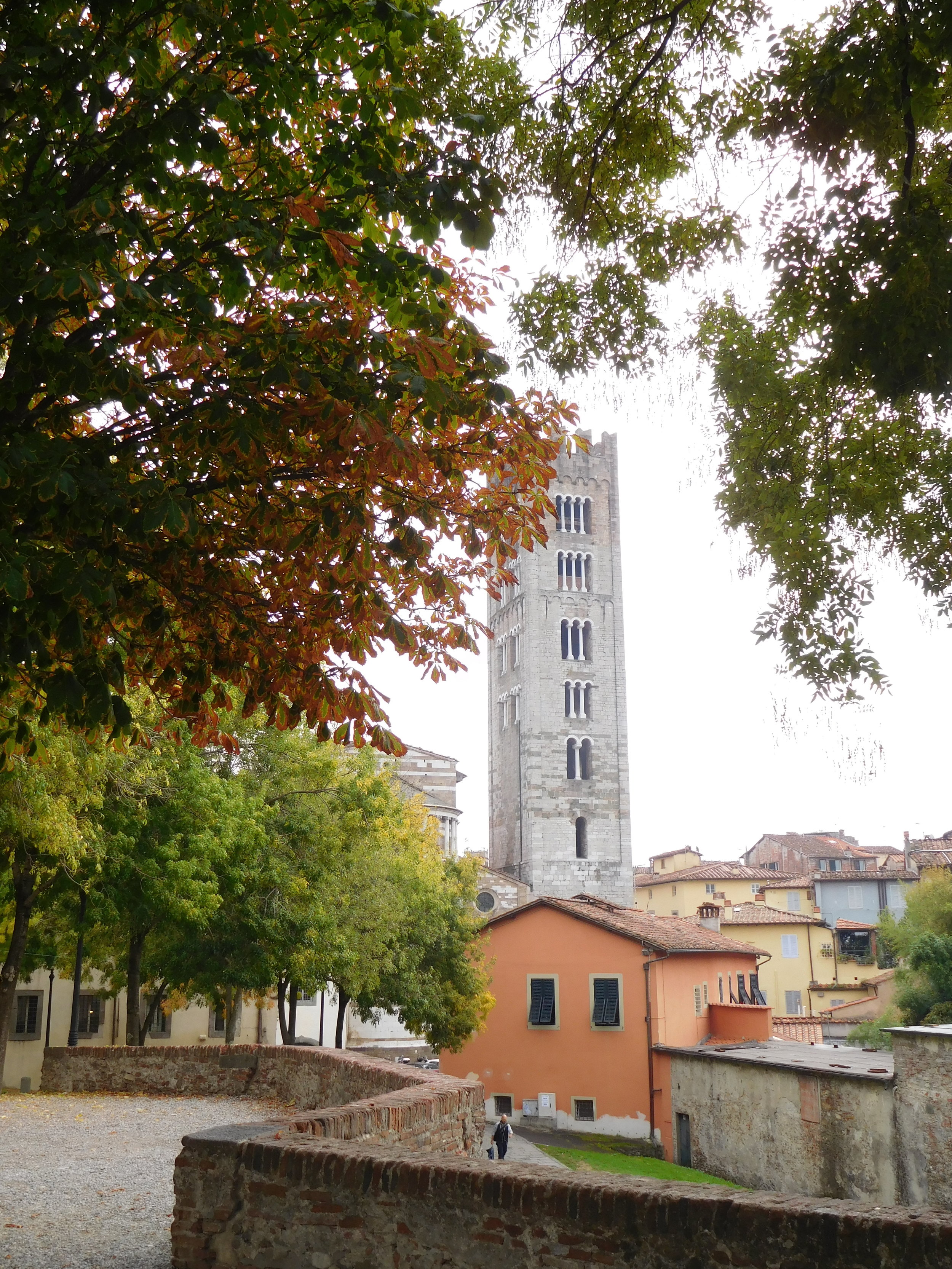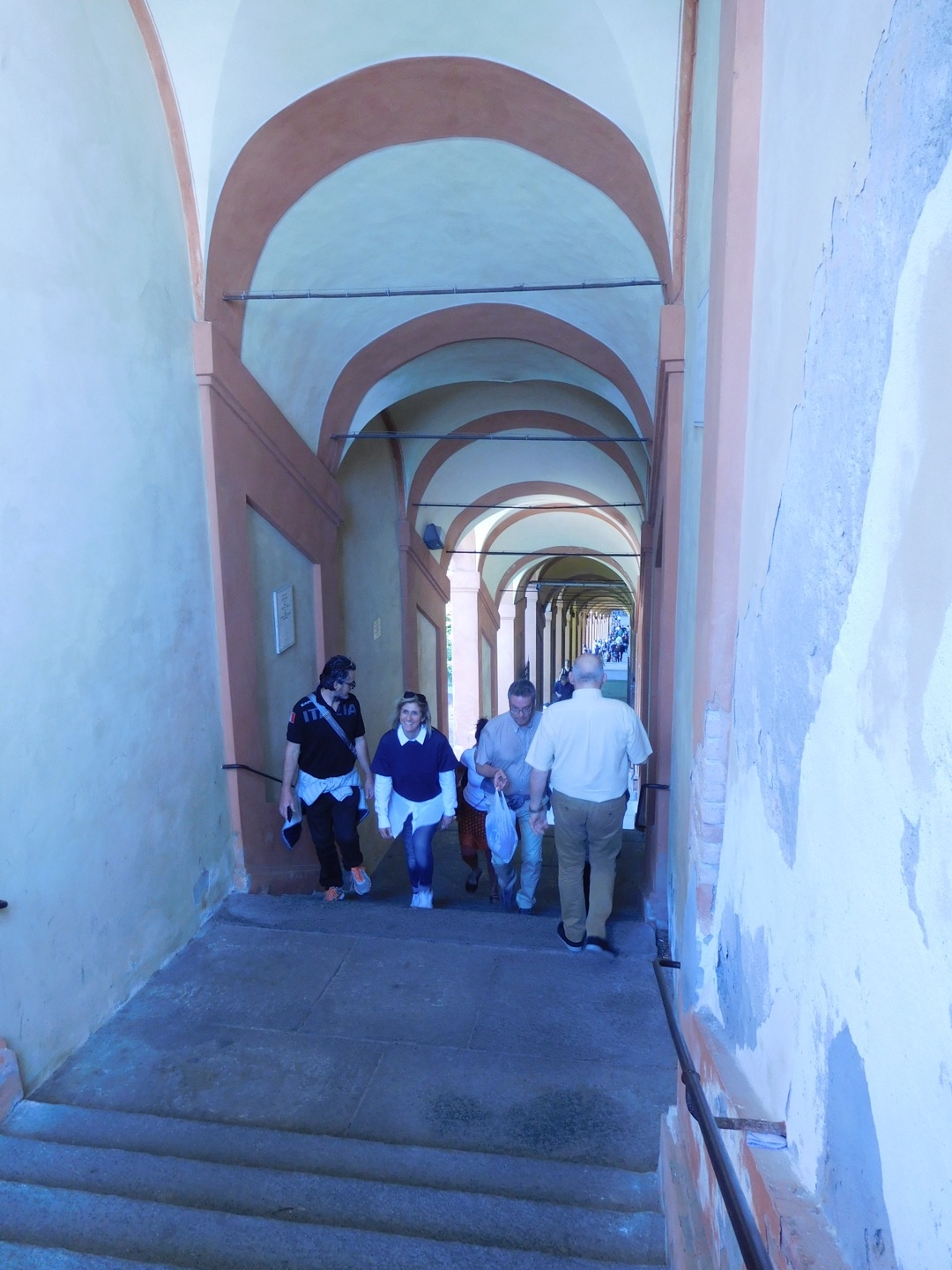Il Bernino Restaurant and Cafe
It seems as though with every stay in Lucca I discover a new restaurant to add to my list of favorites. On my most recent trip my discovery was Il Bernino, a small restaurant and cafe with a wide variety of delicious offerings. I wanted to try it because one of the new owners is a friend and also because I'd heard rave reviews from my Lucca Italian School classmates.
I kept returning to Il Bernino because the food is so good, the service friendly, and the prices reasonable. The setting is also beautiful. It's clear that the chef and owners care about the quality of the food - with an eye to using fresh local products and making seasonal changes to the menu.
The pretty counter is a perfect place to sip your espresso Italian style, standing at the bar.
An after lunch macchiato - these cups made me smile!
I first stopped in late one morning for a quick cappuccino, served Italian style, standing at the bar. It was a good espresso with just the right amount of steamed milk - a perfect mid-morning pick-me-up. An after lunch macchiato was also tasty on another day!
The panini (sandwiches) in the display case looked so good that I grabbed one "da porta via" (to go) for an impromptu picnic on the city walls. It was simple but oh so tasty - a good prosciutto and a bit of cheese on a fabulous olive-studded filone (a long thin baguette). A great picnic lunch.
My next visit was for pranzo (lunch) with a friend (Judy, whom you know as the co-writer of this blog). We both ordered the same thing - spaghetti con vongole e limone (spaghetti with clams and lemon). This was a unique presentation in that the clams were chopped (as opposed to served in the shells) and the dish was topped with fragrant lemon zest. It was delicate and delicious - a dish I can't wait to have again and will certainly crave when I return home to New Mexico.
Next up (remember, I was in Lucca for almost two months) was another lunch, this time a Caesar salad with a juicy, perfectly grilled chicken breast on top. Grilled chicken is not a common dish here in Lucca, so finding this on the menu was a real treat. It was artfully arranged, with lettuce, radicchio, and small tomatoes lightly topped with the chicken and a flavorful dressing. Another wonderful meal.
Il Bernino is open for breakfast, lunch, and dinner (closed Mondays). It's also a great spot for an aperitivo. There is a pretty outdoor seating area. For more formal dining, or on chilly days, head inside and up the stairs to the inviting dining room with it's attractive art and soft music.
Il Bernino is situated at the corner of Via Fillungo and Via Mordini. The outdoor seating is just a bit off busy Via Fillungo - close enough to watch the activity on what is Lucca's "Main Street" but at enough of a distance to feel quiet and relaxed.
Add this wonderful little place to my list of favorites in Lucca!
-post by JMB
The pretty upstairs dining room.
Contact information: Il Bernino Via Filungo 86, Lucca.
